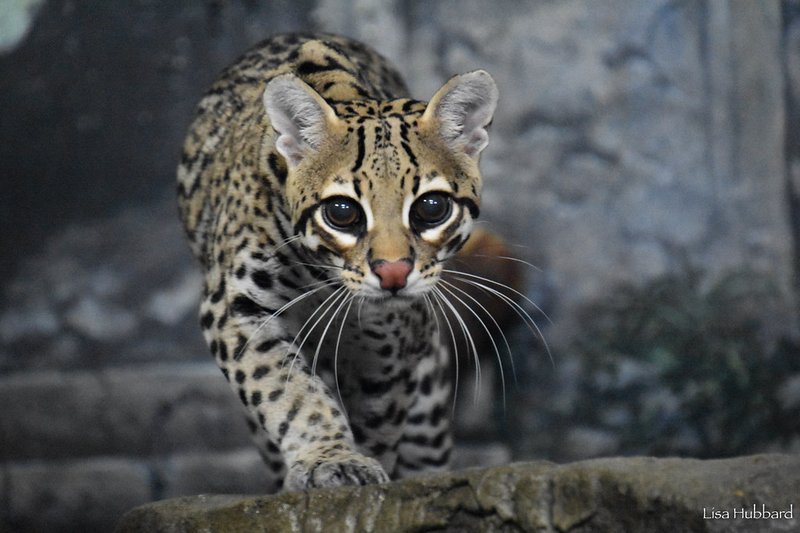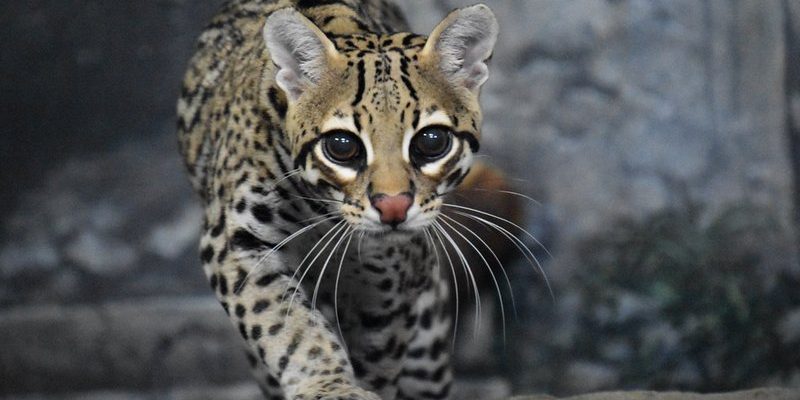
When we talk about wildlife conservation, it’s not just about saving an animal; it’s about protecting entire ecosystems. Every species plays a role—like pieces of a puzzle in a much larger picture. Ocelots are no different. They help control the population of small animals and contribute to the health of their environment. But what’s the current status of ocelots? Are they endangered, and what steps are being taken to help them? Let’s explore these questions together.
What Is the Current Status of Ocelots?
The ocelot is classified as “Least Concern” by the International Union for Conservation of Nature (IUCN), but that doesn’t tell the entire story. Here’s the thing: while their overall population might not be critically low, certain regions are experiencing serious declines. For instance, in places like the United States, ocelots are considered endangered. With only a few hundred left in Texas, their future is uncertain.
It’s essential to understand that the term “Least Concern” doesn’t mean “safe.” Ocelots face significant threats that could change their status at any time. Deforestation, habitat loss, and illegal hunting are some of the biggest culprits. They rely on dense forests and grasslands for shelter and prey. When humans encroach upon these areas, it disrupts their lives and survival.
Moreover, ocelots are solitary animals, which makes them especially vulnerable to habitat fragmentation. When their habitats are cut into smaller pieces, it becomes challenging for ocelots to find mates, food, and safe spaces. This has a direct impact on their breeding and population stability.
Understanding Ocelot Habitats
Ocelots are found in various habitats, ranging from tropical rainforests to dry scrublands. They tend to favor areas where they can easily hide and stalk their prey. Imagine walking through a thick forest where sunlight filters through the leaves, casting shadows on the ground. That’s the kind of environment ocelots thrive in.
However, with growing urbanization, these habitats are shrinking. Roads, agricultural expansion, and deforestation are pushing ocelots out of their homes. This not only limits their living space but also reduces their access to food. Ocelots primarily hunt small mammals, birds, and reptiles. When their hunting grounds are disturbed, they struggle to find enough to eat.
Another point to consider is climate change. As temperatures rise and weather patterns shift, habitats may change in ways that are unfavorable for ocelots. If their environments continue to alter drastically, we could see a further decline in their population.
Threats Facing Ocelots
Ocelots face several specific threats that harm their numbers. Here’s a closer look:
- Habitat Loss: As mentioned earlier, deforestation and urban development are key threats. Ocelots need large territories to roam and hunt, and shrinking forests force them into smaller spaces.
- Poaching: Unfortunately, illegal hunting remains a serious problem. Ocelots are sometimes trapped for their beautiful fur or to be sold as exotic pets.
- Road Mortality: Ocelots often cross roads in search of food or mates, and many fall victim to cars. These accidents can significantly impact local populations, especially in areas of high traffic.
- Climate Change: Changes in weather can impact their habitats, reducing prey availability and causing habitat degradation.
Understanding these threats is crucial for effective conservation efforts. It’s like trying to solve a mystery; we must connect the dots to see how all these factors work together.
Conservation Efforts for Ocelots
To protect ocelots, various conservation efforts are underway. Organizations and local governments are stepping up their game to ensure these cats have a fighting chance. Here’s what’s being done:
1. Protected Areas: Establishing wildlife reserves helps safeguard ocelots’ habitats. These areas provide safe spaces where they can roam freely without the threats of human activity.
2. Reforestation Projects: Planting trees and restoring damaged ecosystems can help rebuild habitats. This creates new spaces for ocelots to thrive and enhances biodiversity.
3. Education and Awareness: Educating the public about ocelots and their importance is vital. Awareness campaigns can help change attitudes towards wildlife preservation and combat illegal hunting.
4. Road Mitigation Measures: Implementing wildlife corridors or overpasses can help ocelots safely cross roads. This reduces road mortality and connects fragmented habitats.
Conservation isn’t just about saving a single species; it’s about creating a balanced ecosystem. By protecting ocelots, we support the entire web of life they are part of.
The Role of Community in Conservation
Community involvement is perhaps one of the most impactful aspects of conservation. Local people play a crucial role in protecting ocelots and their habitats. Here’s how communities can help:
– Sustainable Practices: Encouraging sustainable agriculture and land-use practices can minimize habitat destruction. When communities adopt eco-friendly methods, it benefits both their livelihoods and local wildlife.
– Citizen Science: Engaging local communities in wildlife monitoring can increase awareness and participation in conservation. These efforts provide valuable data for researchers while empowering locals.
– Cultural Significance: Emphasizing the cultural and ecological significance of ocelots can promote conservation efforts. When people recognize the value of local wildlife, they’re more likely to protect it.
Strong community engagement can turn the tide for ocelots and their survival. Together, people and wildlife can coexist harmoniously.
How You Can Help Ocelots
You might be wondering, “What can I do to help ocelots?” Great question! There are several ways you can contribute to their conservation:
– Support Conservation Organizations: Donating to wildlife conservation groups or volunteering can make a big difference. These organizations often work directly on the ground to protect habitats and wildlife.
– Spread the Word: Talking about ocelots and their plight with friends and family raises awareness. The more people know, the more likely they are to take action.
– Choose Sustainable Products: Supporting brands that prioritize sustainable sourcing and eco-friendly practices helps protect habitats globally. Every little choice adds up.
– Advocate for Policy Change: Engage with local governments to support legislation that protects wildlife and natural habitats. Your voice can influence important decisions.
Remember, every small action counts. Together, we can work towards a future where ocelots roam freely in the wild.
The story of the ocelot is one that reflects our relationship with nature. While they are not classified as endangered on a global scale, specific populations are at risk, and that’s a big deal. As we continue to learn about these incredible cats, it’s essential to recognize our role in their future.
Through conservation efforts, community involvement, and individual actions, we can help ensure that ocelots remain a vibrant part of our world. There’s still hope for their survival, and with collective efforts, we can make a difference. Let’s keep the conversation going, share knowledge, and take steps—no matter how small—to protect these beautiful creatures for generations to come.

